ComradeP
Posts: 7192
Joined: 9/17/2009
Status: offline

|
For those worrying about how lethal the winter is going to be to Elmo, here's some historical information on casualties:
Up to November, the Germans (not the Axis, the Germans alone) had suffered 686.000 casualties, that's 20% of the 3.4 million men (including replacements) at or send to the Eastern Front since the fighting started or about a regiment for each division. Out of the roughly half a million motor vehicles, 1/3 were worn out or damaged beyond repair and only 1/3 were serviceable. According to OKH, the 136 divisions at the Eastern Front had a strength of 83 full strength divisions.
The Soviets had about 4.2 million men at the front in early December. Even if we take the Soviet official literature's figures for troop strength and losses in terms of divisions, out of the 461 divisions at or moved to the front or in reserves since June 22, only 279 were in field (that's as paper units) in early December. That's a loss rate of 39%. The majority of the roughly 2 million militia divisions, local party reserves and the like had been badly mauled or simply disappeared.
Source: Moscow to Stalingrad - Decision in the East by the (US) Center of Military History.
Even though Soviet losses have not been spectacular, Axis forces are still in a good shape, although it's difficult to tell what the AFV losses represent. In any case, I doubt that at this point 6th and 7th Panzer have a combined strength of 600 guys and no tanks like in real life December 1941.
Soviet aircraft losses have been considerable, and Luftwaffe losses are fairly historical thus far: up to November the Luftwaffe had an average monthly strength of 2.462 aircraft and an average monthly loss rate of 741 aircraft, which more or less matches the current result, although that seems to be for all Axis air forces, which means elmo's probably doing fine. Up to around November, the Luftwaffe had lost 5002 aircraft in 1941 (all fronts) and had 3.562 damaged aircraft (all fronts). By late September, Luftwaffe "in commission" rates dropped to below 60% for fighters and below 50% and later 40% for bombers. As elmo's not managing all of his air assets himself, I'd say the results have been pretty good thus far compared to history.
Source: The Luftwaffe 1933-1945 - Strategy for Defeat by Williamson Murray.
-
Elmo, if I may give some advice, remember not to turn the advance to Moscow into a copy of Stalingrad: you don't need to capture Moscow for any strategic goal, you're pushing towards Moscow by choice.
Suggestions for future pre-winter combat actrions in the northern/central front:
See if you can capture most of Leningrad. You can probably take your time. Try to push the Soviets back into the marshes and wish them a good winter. I'd suggest destroying/pushing back the 4=28 stack south of the air recon in the western part of the Leningrad sector screenshot so you can open more rail lines. I don't know whether air HQ's need a ground like to evacuate, because if they do the AI has presented you with a fine chance to destroy some aircraft north of Leningrad after you encircle/occupy the city.
I'd suggest pulling your guys back to Vyazma. After that, shift your tanks to the south in the good tank country and capture Bryansk. Establish a defensive line at the river Bolva. You have two rivers to fall back to in the immediate surrounding area. I really doubt the Soviets can get through there.
South of Velikiye Luki, I see a mob of Rifle formations that are just begging to be encircled as they're in a position they can't quickly get out of it seems. Capture Velikiye Luki and possibly push the flanks up to Rzhev. As Rzhev is on the "wrong" side of the river, you might want to wait with capturing it although I guess it could serve as the anchor to your northern flank.
Suggestions for the southern/central sector: The bridgehead east of Kiev is nice, but not necessary. Try to pull back a bit and push back the Soviets directly north of Kiev.
From a defensive perspective, you basically have two choices of where to position your defensive line: You could shift some Panzers south to capture Cherkassy and Kirovograd and build a line there, although you'll also have to push back the Soviets further south. If the weather holds for a while, that might be possible, but it's a more risky option. Your "line" at Cherkassy is a huge gaping hole currently, so you'll have to do something in any case.
The less risky option would be to simply draw a straight line south from Kiev and defend along the rivers in the area, pulling back the Minor Axis forces to the west back of the rivers (some of them are across) but still pushing the Soviets back to Nikolaev. Nikolaev, like Rzhev, is on the "wrong" side of the river, so you might want to wait with capturing it. The south is mostly tank country, so you should be able to plug breakthroughs easily provided your Panzer divisions are not at the frontline.
The historical 1941-1942 Soviet winteroffensive worked because the Axis were stretched thin, not due to the quality of Soviet troops or the brilliance of their plan (Stalin basically planned to encircle every Army Group at the same time, ignoring suggestions from Zhukov and others for more limited encirclements). If you place your forces from Vyazma to Nikolaev in a more or less straight line, using rivers to your advantage, you should be able to hold out, especially if you rest your forces and prepare for most of November. The primary thing to keep in mind is that in 1941 and early 1942, the quality of Soviet forces is still poor, so it doesn't really matter how many guys they bring as long as you're prepared and rested.
Try not to suffer from the "victory disease" many wargamers suffer from, trying to always push further. It's time to stabilize the front through limited gains, secure the flanks and dig in. Make the Soviets suffer when they attack.
< Message edited by ComradeP -- 3/8/2010 6:06:28 PM >
|
 Printable Version
Printable Version
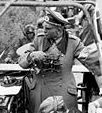






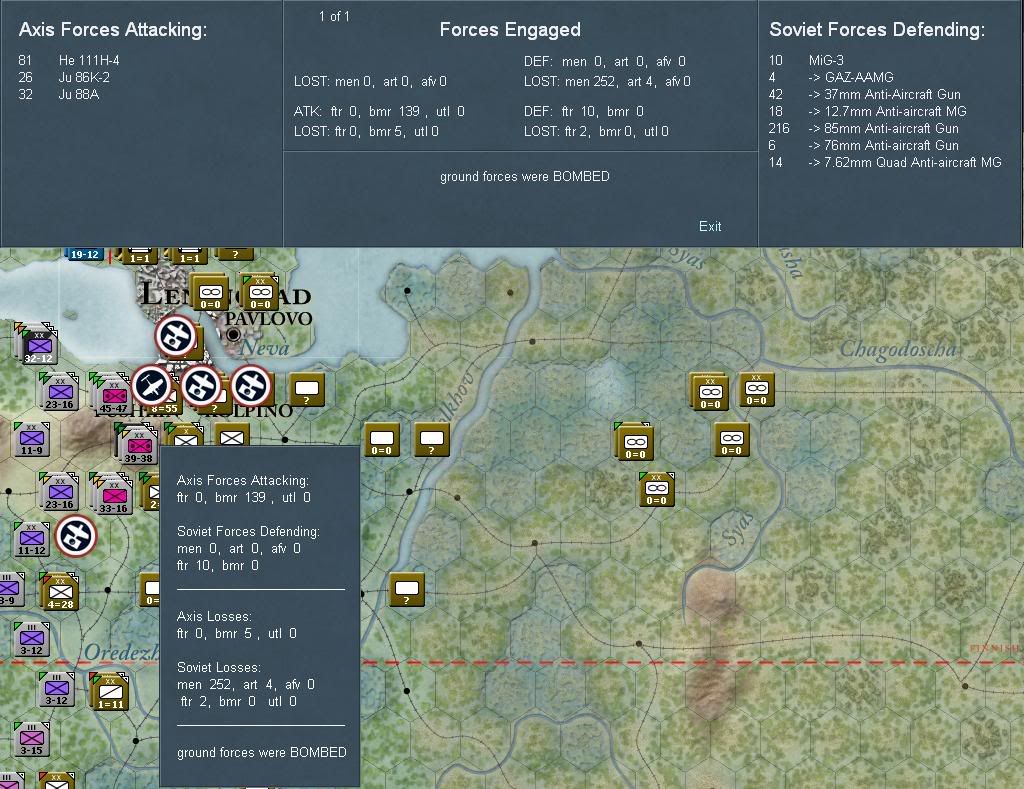
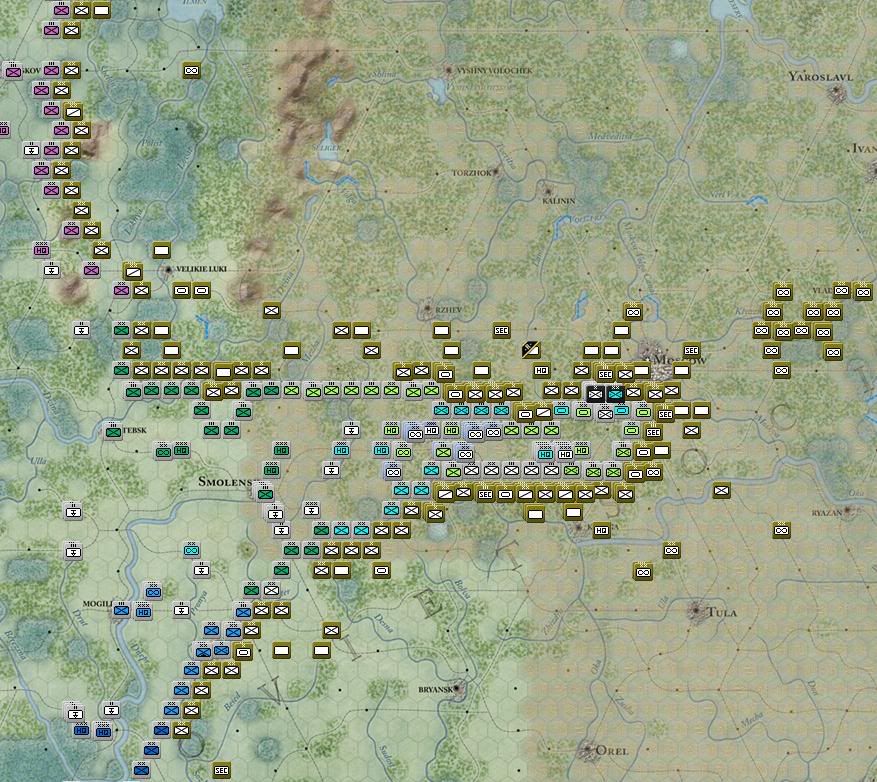
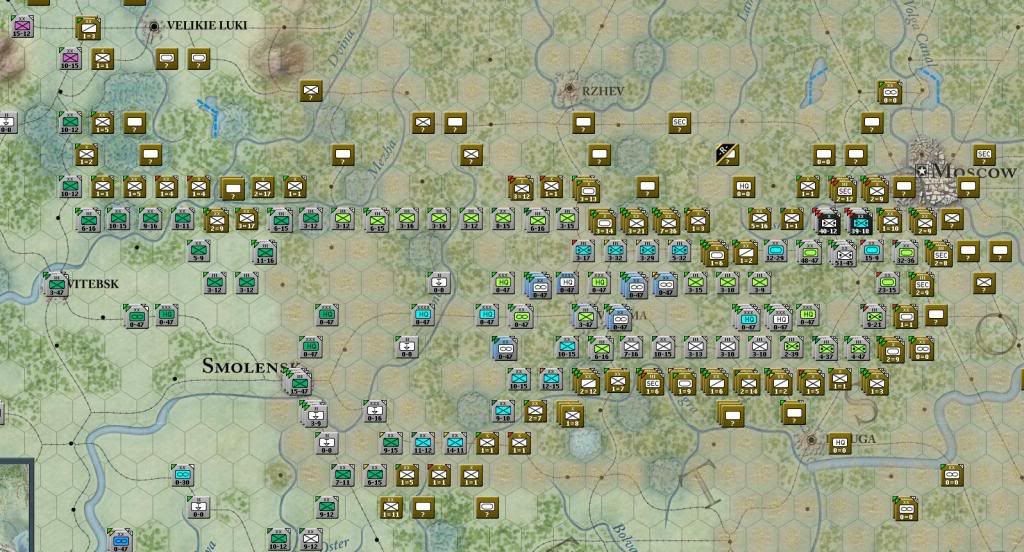
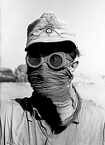




 and capture moscow
and capture moscow !!! Spend the winter in the capital and go shopping at the GUM department store.
!!! Spend the winter in the capital and go shopping at the GUM department store. 

 New Messages
New Messages No New Messages
No New Messages Hot Topic w/ New Messages
Hot Topic w/ New Messages Hot Topic w/o New Messages
Hot Topic w/o New Messages Locked w/ New Messages
Locked w/ New Messages Locked w/o New Messages
Locked w/o New Messages Post New Thread
Post New Thread